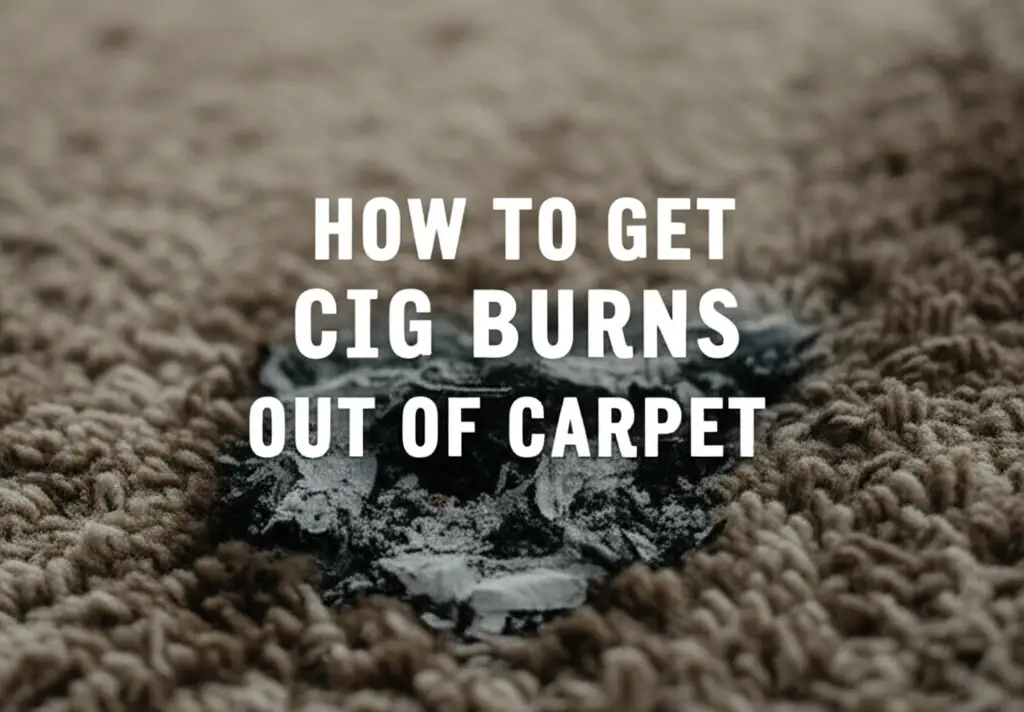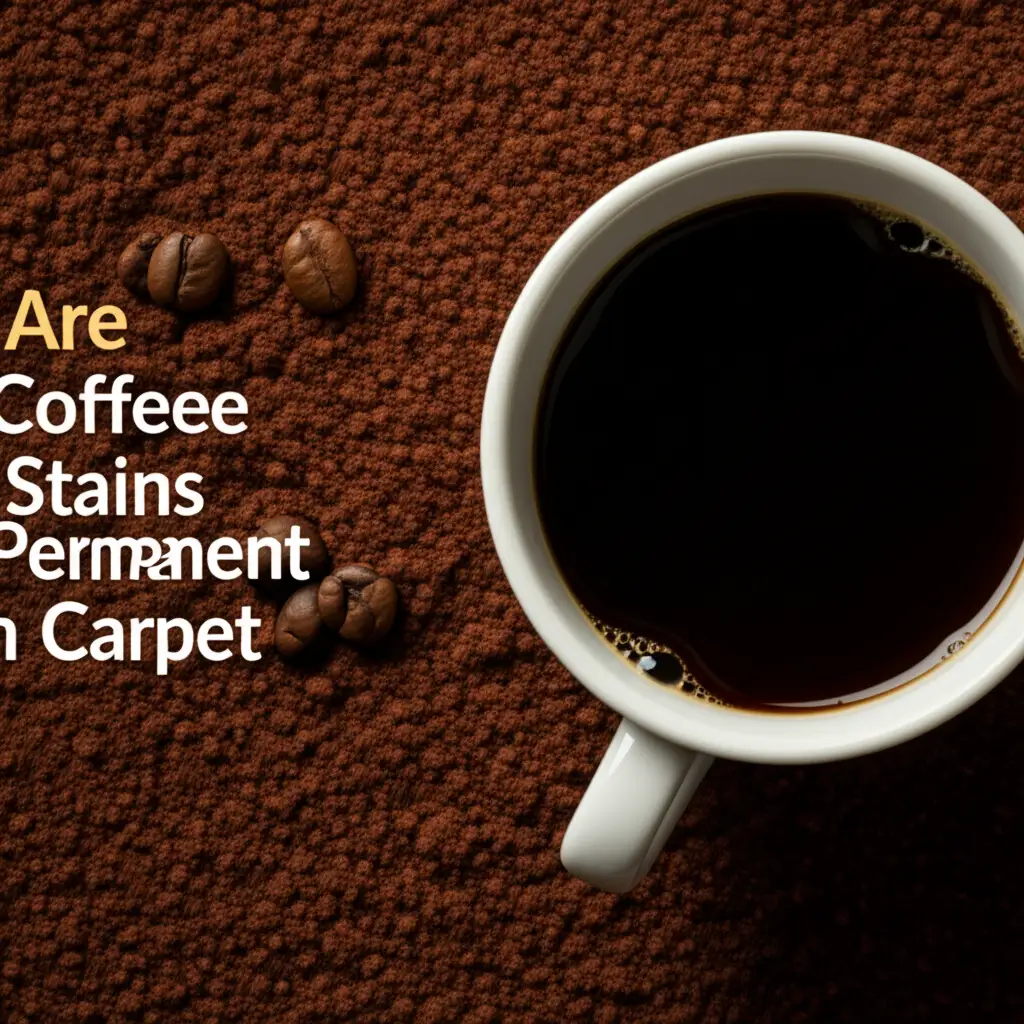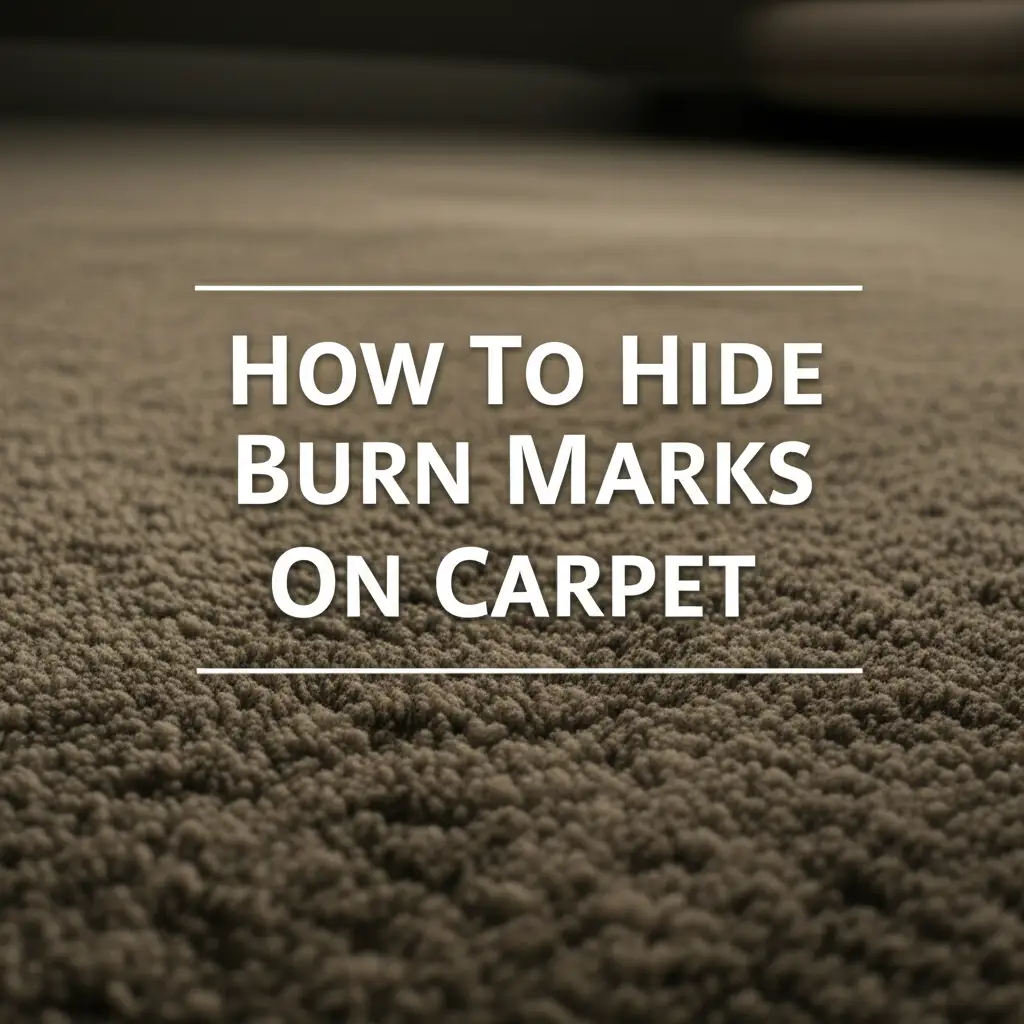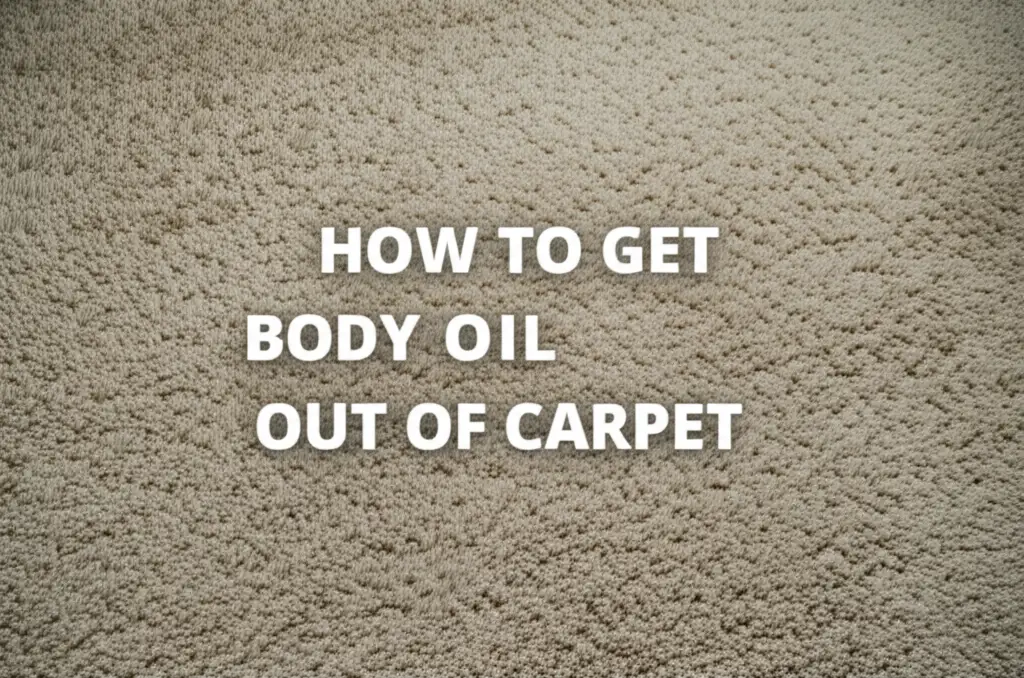· Elira Thomsen · Home Improvement, Carpet Care, Cleaning Tips · 13 min read
How To Get Cig Burns Out Of Carpet

Easy Ways to Get Cig Burns Out of Carpet
Discovering a cigarette burn on your beautiful carpet can feel like a disaster. One moment of carelessness can leave a visible scar on your floor. Maybe a dropped ash or a hot tip caused the damage. I understand the frustration you feel when faced with such a blemish. The good news is that many cigarette burns are fixable. You do not always need professional help. Knowing how to get cig burns out of carpet can save you money and keep your home looking its best.
This article provides clear, step-by-step instructions for repairing different types of carpet burns. We will cover everything from light scorches to actual holes. You will learn about the tools you need and the best methods to use. We also share tips for post-repair care and how to prevent future accidents. By the end, you will feel confident tackling these common carpet mishaps. Let’s make that burn mark disappear.
Takeaway
- Assess the burn’s depth: superficial, melted, or a hole.
- Gather necessary tools like scissors, sandpaper, and adhesive.
- Choose the correct repair method based on damage severity.
- Follow steps precisely for optimal carpet restoration.
- Perform post-repair cleaning and maintenance.
You can get cigarette burns out of carpet by carefully trimming burnt fibers, gently sanding light marks, or patching larger damaged areas with new carpet fibers. The best method depends on the burn’s depth and size. Quick action and proper technique help restore your carpet’s appearance.
Assessing the Damage: Different Types of Cigarette Burns in Carpet
Before you begin any repair, you must look closely at the cigarette burn. Not all burns are the same. They vary in depth and severity. Understanding the type of damage helps you choose the right repair method. A light scorch is very different from a deep hole.
A superficial burn means only the very tips of the carpet fibers are affected. You might see a slight discoloration or a small area of hardened ash. The underlying carpet structure remains intact. This type of burn is often the easiest to fix. You might only need a simple trim and a brush.
Melted fibers represent a slightly more severe burn. Here, the heat has caused the synthetic carpet fibers to melt together. They form a hard, plastic-like clump. You can feel this clump when you touch it. While no actual hole exists, the texture is rough and noticeable. This type of damage requires more than just trimming.
The most severe damage is an actual hole. This happens when the cigarette burns completely through the carpet fibers. You can see the carpet backing or even the subfloor underneath. Patching is usually the only option for these burns. Knowing the carpet material can also help. Different carpet materials, like nylon or wool, react differently to heat. For example, some synthetic fibers melt more readily than natural ones. Understanding what your carpet is made of can give you clues about the burn. You can learn more about carpet materials to help identify yours at what is car carpet made of. A proper assessment sets the stage for a successful repair.
Essential Tools and Materials for DIY Carpet Burn Repair
Having the right tools on hand makes any carpet repair job easier. You do not need fancy equipment. Most items are likely already in your home or easily bought. Gathering everything before you start saves time and frustration. I always recommend having a small repair kit ready for carpet mishaps.
First, you will need a pair of small, sharp scissors. Manicure scissors work well for precise trimming. They let you cut individual burnt fibers without damaging surrounding areas. Next, get some fine-grit sandpaper. This tool is useful for gently rubbing away hardened or melted spots. Choose a very fine grit to avoid scratching the healthy carpet fibers.
Tweezers are also incredibly helpful. They allow you to pick up individual fibers or small pieces of debris. A clear-drying adhesive is crucial for patching jobs. Look for super glue or a fabric-specific adhesive. Make sure it dries clear and flexible. This prevents stiff patches.
A vacuum cleaner is a must-have. You will use it to remove loose ash and trimmed fibers. A stiff brush, like a toothbrush or a carpet brush, helps blend fibers. Finally, for patching, you will need matching carpet fibers. You can get these from a hidden spot in your house. A closet corner or an area under heavy furniture works perfectly. A utility knife or razor blade is also good for cutting out sections if you need to patch. Having these items ready ensures a smooth and effective repair process.
Method 1: Repairing Superficial Cigarette Burns and Scorched Fibers
If your cigarette burn is small and only affects the very tips of the carpet, you are in luck. This type of damage is often easy to fix. The goal is to remove the burnt, discolored parts without creating a bald spot. This method works well for scorch marks where no actual hole has formed.
First, you need to carefully trim the burnt tips. Take your small, sharp scissors. Hold them at a slight angle. Gently snip off just the burnt, blackened ends of the fibers. Be very precise. Do not cut into the healthy, unaffected carpet. You only want to remove the charred portions. Work slowly, one fiber at a time if necessary. I find that patience here prevents bigger problems.
After trimming, use a stiff brush. A toothbrush works well for small areas. Gently brush the trimmed area. This helps to blend the remaining fibers. The goal is to make the area look fluffy and natural again. Brushing helps to disguise any slight unevenness from trimming.
Finally, vacuum the area thoroughly. This step removes any loose ash or trimmed fibers. A clean area looks much better. You want to pick up all the tiny debris. This method should make minor cigarette burn marks almost invisible. It is a quick and effective solution for surface-level damage.
Method 2: Using Sandpaper for Melted or Hardened Carpet Spots
Sometimes a cigarette burn melts the carpet fibers together, creating a hard, crusty spot. This is more severe than a simple scorch but less damaging than a full hole. Sandpaper can effectively remove these hardened areas. This method requires a gentle touch to avoid further damage.
Start by gently scraping the hardened area. You can use a utility knife or the edge of a spoon. Be very careful not to cut or pull out healthy fibers. You just want to break up the stiff, melted mass. This initial scraping helps loosen the hardened material. This step makes the sanding process more effective.
Next, take your fine-grit sandpaper. Wrap it around your finger or a small block. Lightly rub the melted spot in the direction of the carpet pile. Use very short, gentle strokes. The sandpaper will slowly abrade the hardened plastic-like residue. The goal is to wear down the melted fibers until they match the height of the surrounding carpet. Do not press too hard. Too much pressure can create a bald patch. Work slowly and check your progress frequently.
After sanding, use a stiff brush to fluff the carpet fibers. Then, vacuum the area thoroughly. This removes the tiny particles created by sanding. The aim is to make the treated spot blend seamlessly with the rest of the carpet. This method restores the carpet’s soft texture. It removes the visible hardened spot effectively.
Method 3: Patching Actual Holes and Deep Cigarette Burns in Carpet
When a cigarette burn creates an actual hole in your carpet, patching is the most effective solution. This method replaces the damaged section with new carpet. It requires precision and patience. A successful patch can make a deep burn almost disappear.
Obtaining Donor Carpet Fibers
The first step is to find matching carpet fibers. Look for an inconspicuous area of your carpet. Under a heavy piece of furniture, inside a closet, or from a leftover carpet scrap are ideal places. You need a piece of carpet slightly larger than the burn hole. If you are replacing a section, ensure the new piece matches the old one. If you have carpet tiles, you might consider replacing the damaged tile entirely. You can learn tips on cutting and fitting pieces similarly to how to arrange carpet tiles.
Carefully Removing Damaged Area
Use a sharp utility knife or razor blade. Cut out the burned area in a square or rectangular shape. Make the cut clean and precise. Ensure the hole is slightly larger than the actual burn to remove all damaged fibers. Cut through the carpet backing. This creates a clean opening for your patch.
Applying Adhesive and Placing New Fibers
Take your donor carpet piece. Cut it to exactly match the shape of the hole you created. Make sure the pile direction matches the surrounding carpet. Apply a thin layer of clear-drying adhesive around the edges of the hole on the carpet backing. You can also apply some glue to the back of your patch piece. Carefully place the new carpet patch into the hole. Press it firmly into place. Ensure it sits flush with the surrounding carpet.
Blending the Patch Seamlessly
Once the patch is in place, use your fingers or a stiff brush to blend the new fibers with the old. Gently push and pull fibers from the old carpet over the edges of the new patch. This helps hide the seams. Let the adhesive dry completely, following the product instructions. After drying, a light vacuuming can help fluff the area. This makes the patch less noticeable. This method is the best way to fix significant burn damage.
Post-Repair Cleaning and Ongoing Carpet Care
After you have successfully repaired a cigarette burn, a few final steps ensure your carpet looks its best. Proper cleaning and ongoing care help the repaired area blend in. It also maintains your carpet’s overall appearance and longevity. I always give my carpet a good clean after any repair.
First, vacuum the repaired area. This removes any loose fibers or adhesive residue. A thorough vacuuming also helps to fluff the carpet pile. It makes the patched or trimmed area look more uniform. Vacuuming regularly is a simple habit that keeps carpets fresh. For deeper cleaning, you might want to understand how carpet cleaning works for a more comprehensive approach.
If any dirt or grime accumulated around the burn during the repair process, perform a spot clean. Use a mild carpet cleaner or a solution of warm water and a small amount of dish soap. Apply it to a clean cloth. Gently blot the area. Do not rub, as this can spread dirt or damage the newly repaired spot. Blot until the area is clean. Then, blot with a clean, damp cloth to rinse. Finally, blot dry with a towel. If your carpet has general deep-seated dirt, you may want to know how to get deep grime out of carpet for a complete cleaning solution.
For ongoing carpet care, regular vacuuming is key. Address spills immediately to prevent stains from setting. Consider professional cleaning every 12-18 months. This helps remove embedded dirt and prolongs carpet life. Good maintenance keeps your carpet looking new for longer.
Preventing Future Cigarette Burn Accidents
Fixing a cigarette burn is satisfying, but preventing them is even better. A few simple habits can help you avoid future carpet damage. Thinking ahead can save you time and effort in repairs. I always advise taking proactive steps to protect your home.
Designate specific smoking areas. If you or guests smoke, do so outdoors. This completely removes the risk of burns inside your home. If outdoor smoking is not an option, create a safe indoor space. Choose an area with hard flooring, like tile or wood. Avoid carpeted rooms for smoking.
Use sturdy, deep ashtrays. Shallow or flimsy ashtrays can easily tip over. Choose heavy, wide ashtrays that are difficult to knock over. Ensure they are made of non-combustible materials like ceramic or metal. Always fully extinguish cigarettes. Do not leave smoldering butts in an ashtray. A smoldering cigarette can still cause a burn if dropped.
Be mindful of your surroundings. When you handle cigarettes, be aware of where ashes might fall. Do not smoke when you are sleepy or distracted. A momentary lapse in attention can lead to an accident. Educate household members and guests about these safety practices. Remind them about the importance of protecting your carpet. Simple precautions can keep your carpet beautiful and free from burns.
FAQ Section
Can all cigarette burns be completely removed?
No, not all cigarette burns can be completely removed without a trace. Small, superficial burns are often made invisible with trimming and blending. Deeper burns or holes can be patched. This greatly improves the carpet’s appearance. A faint line or slight texture difference might remain, especially if the patch is large.
What if I do not have a carpet scrap for patching?
If you lack a carpet scrap, check hidden areas. Look inside closets, under beds, or behind large furniture. These spots often provide small, unnoticeable sections for patching. If no hidden areas exist, you might buy a small carpet remnant that closely matches your carpet. Professional carpet repair services also have access to various carpet types.
Is professional carpet repair better for severe burns?
Yes, for severe or large cigarette burns, professional carpet repair is often the best option. Professionals have specialized tools and techniques. They can patch large areas more seamlessly. They can also re-tuft fibers or perform invisible mending. This results in a repair that is hard to detect.
How long does carpet burn repair last?
The longevity of a carpet burn repair depends on the method used and the quality of the work. Trimmed or sanded superficial burns are permanent. Patched areas can last for many years, often the lifespan of the carpet itself, if done correctly with strong adhesive. Heavy foot traffic can affect the patch over time.
Can baking soda help with cigarette burns?
Baking soda can help with the smell of smoke or minor discoloration from ash, but it does not repair the burn itself. For light ash residue, you can sprinkle baking soda, let it sit, then vacuum it. However, it cannot fix melted fibers or holes. Those require physical repair methods.
What carpet materials are most resistant to burns?
No carpet material is fully burn-proof. However, some materials resist heat better. Wool carpet is naturally flame-resistant. It tends to char rather than melt, making smaller burns easier to trim. Synthetic fibers like nylon or polypropylene melt when exposed to high heat. This creates hard, melted spots.
Conclusion
A cigarette burn on your carpet can be disheartening. However, with the right approach, you can effectively minimize or even eliminate the damage. We have explored several practical methods to get cigarette burns out of carpet. From simple trimming for superficial scorches to precise patching for deeper holes, there is a solution for most types of burn damage. Remember, assessing the burn’s severity is your first crucial step.
Gathering the right tools and patiently following the repair instructions will yield the best results. Post-repair cleaning ensures the area looks fresh. More importantly, adopting preventive measures will protect your carpet from future accidents. By using sturdy ashtrays and being mindful of smoking locations, you can keep your home looking its best. Do not let a small burn diminish your home’s appearance. Take action today and restore your carpet’s beauty. Try these methods, and see how simple it is to bring your carpet back to life.
- cigarette burn carpet
- carpet repair
- remove burn marks
- DIY carpet fix
- carpet cleaning
- home care
- burn damage
- melted carpet





